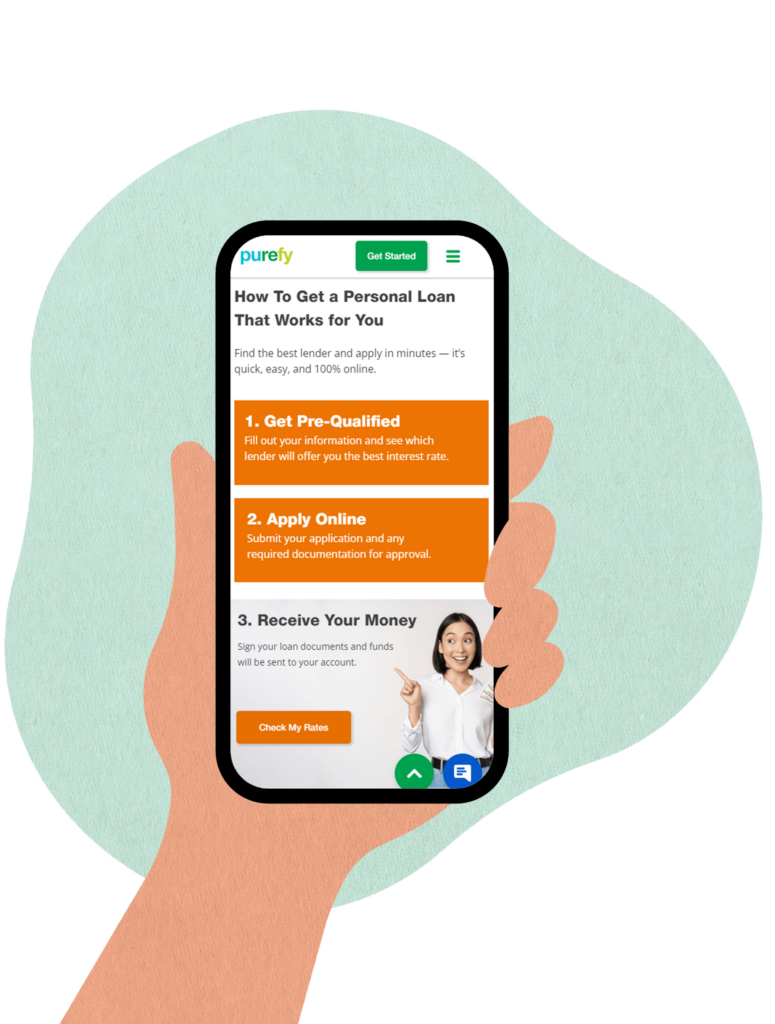A personal loan used to be a last resort for emergency expenses or to tide you over until your next paycheck. But in the past few years, they’ve become increasingly popular. According to Experian, the number of personal loans has increased by 16% to 25.1 million.
Why the sudden urge? Rising inflation and interest rates have people looking for ways to save money, so they’re using personal loans to consolidate credit card debt and finance major purchases.
But what is a personal loan, and how does it work? Continue reading to learn the ins and outs of this common loan option.
What Is a Personal Loan?
Unlike credit cards, which are a form of revolving credit, a personal loan is a type of installment loan. You receive a lump sum amount to consolidate debt or pay for an emergency expense, and you repay it in monthly installment payments.
With most personal loans, you can borrow between $1,000 and $50,000, though some lenders have higher loan maximums. In general, loan repayment terms range from two to seven years.
Personal loans can be appealing because they typically have lower interest rates than credit cards.
[Tip: If you have less-than-perfect credit, you can still qualify for a personal loan. Some lenders offer secured loans that use your car or other property as collateral, and some allow you to apply with a cosigner or joint applicant.]
How Does a Personal Loan Work?
Personal loans typically have fixed interest rates, so your interest rate and monthly payment stay the same for the entirety of your loan term.
Unlike other forms of debt, such as home equity loans or home equity lines of credit, personal loans are usually unsecured. They don’t require any form of collateral; instead, lenders decide whether to lend you money based on your credit history and income.
Because personal loans are unsecured, you’re not at risk of losing your house or car if you fall behind on your payments like you would with secured loans. But there are still serious consequences for missing payments:
- Late fees: Lenders charge late fees that are a percentage of the late payment amount or a flat fee. The fee is charged when you are as little as one day late with your payment.
- Damaged credit: When you are late by one billing cycle, the lender will report the late payment to the credit bureaus. And if you still don’t make payments and the loan enters default, the lender reports the default to the credit bureaus, too. A default can significantly damage your credit, making it difficult or even impossible to qualify for other forms of credit.
- Collections: When you default on a personal loan, the lender will sell the account to a collections agency. The agency will aggressively collect on the debt, and there are often added fees and penalties.
- Lawsuit: If the collection agency cannot reach a settlement with you and you don’t pay the loan balance, it may sue you to recoup the money. You could be on the hook for legal fees in addition to the outstanding balance.
- Wage garnishment: If the collection agency’s lawsuit is successful, it can get a court order to garnish your wages to repay the loan, fees, and penalties.
What Can a Personal Loan Be Used For?
- Home renovations: New granite countertops. A walk-in shower. Or perhaps solar panels. Whatever home improvement project you have in mind, a personal loan can help you cover the cost.
- Moving expenses: Moving to another state or even another city can be expensive. On average, moving costs between $1,250 and $4,900. A personal loan can pay for movers, a moving truck, packing supplies, and other expenses.
- Medical bills: If you have a medical procedure that isn’t covered by your insurance, such as LASIK eye surgery or cosmetic surgery, a personal loan allows you to finance the cost.
- Veterinary bills: If you own a pet, you know how expensive emergency care can be. Emergency surgery can cost between $1,500 and $5,000, so a personal loan permits you to spread the cost out in installments.
- Vacations: A once-in-a-lifetime vacation in another country is a common bucket list item. While going into debt for non-essential expenses isn’t recommended, a personal loan can be used to pay for vacation expenses.
- Weddings: Although it’s recommended that you save rather than borrow to pay for a wedding, that isn’t always realistic. With a personal loan, you can finance your dream wedding and repay it in monthly installments.
- Debt consolidation: If you have high-interest credit card debt, you can use a personal loan to consolidate your balances, save money, and pay off your debt faster.
Personal loan lenders usually prohibit using loan funds for investing, gambling, or education-related expenses, including student loan repayment. Otherwise, you can use the loan for most major purchases.
Compare Personal Loan Offers
Compare Personal Loan Offers
How to Consolidate Debt with a Personal Loan
One of the most popular uses of personal loans is to consolidate high-interest credit card debt. With this strategy, you apply for a personal loan for the amount of your outstanding debt, and then you use the loan to pay off those accounts.
By doing this, you’ll have one monthly payment instead of several, and if the personal loan charges a lower interest rate than your credit cards do (which is often the case), you’ll be able to save money over time.
For example, let’s say you have $5,000 in credit card debt. If your card charges 19% APR and your minimum monthly payment is $175, it will take you 38 months to pay off your debt. And you’ll pay a total of $6,650.
If you consolidated your debt with a personal loan, you may qualify for a loan with a two-year term and a 7.00% APR. With the loan, your monthly payment would be $223.86, and you’d pay off the balance 14 months sooner. Plus, you’d pay a total of just $5,373, allowing you to save $1,277 in interest.
How to Get a Personal Loan in 5 Steps
Getting a personal loan is surprisingly easy. You can usually apply online in a matter of minutes and, if approved, you could receive the money as soon as the next business day.
1. Review Your Credit
To qualify for a personal loan, you usually need to have good to excellent credit. According to Equifax, that means you need a score of 670 or above.
There are some lenders that will lend to borrowers with scores below that range, but they usually charge much higher interest rates.
It’s a good idea to review your credit report and dispute any errors to get your credit as strong as possible. You can view your credit reports for free at AnnualCreditReport.com.
2. Decide How Much You Need
With a personal loan, you can typically borrow up to $50,000. While it may be tempting to borrow more than you need, keep in mind that a larger loan means you’ll have a higher monthly payment, and more interest will accrue over time.
To minimize interest charges, borrow only enough to cover your expense.
3. Shop Around
Rates, terms, and eligibility requirements vary between lenders. Shopping around and comparing quotes can pay off in the form of lower rates, and many lenders have prequalification tools you can use to check your eligibility without affecting your credit.
4. Collect Documents
When you find a loan that works for you, it’s time to apply. The lender will ask for your personal information, including your employer and income. If you have your pay stub or W-2 form handy, that can help speed up the process.
5. Submit Your Application
Lenders will also ask for a copy of your identification, such as a driver’s license or passport, and you’ll have to consent to a hard credit check, which can cause your credit score to drop by a few points.
Once your application is submitted, many lenders will make a decision within minutes and send you a loan agreement to finalize the loan.
If you want to move forward, sign and return the loan agreement. If the lender will issue funds through direct deposit, submit your bank information so the bank can disburse your loan. Depending on the lender, you could receive the money within one day.
Using a Personal Loan Wisely
Whether you want new appliances, have a major medical expense, or are determined to pay off your credit card debt as quickly as possible, a personal loan can help you achieve your goal. With a personal loan, you can potentially get a lower interest rate than you’d get with a credit card, and you can spread out your payments over several years.
If you want to take out a loan, be sure to shop around first. With Purefy, you can fill out one simple form and get quotes from multiple personal loan lenders so you can find the best deal.
Credit Card Debt Piling Up?














